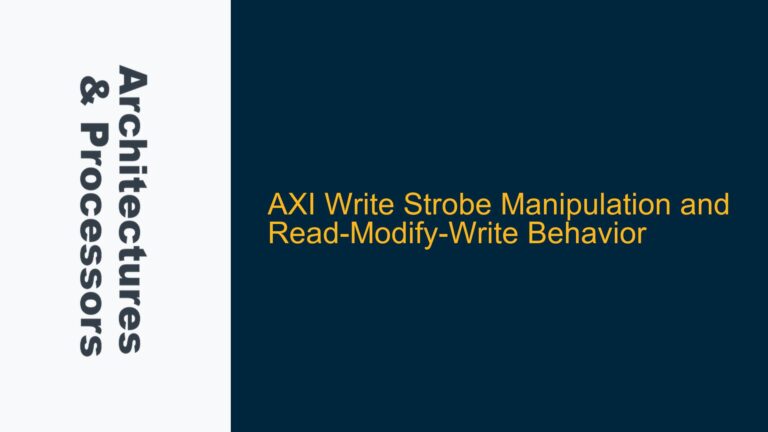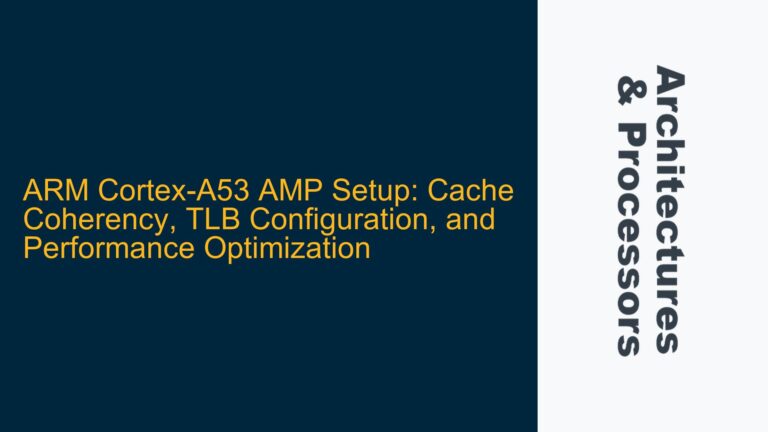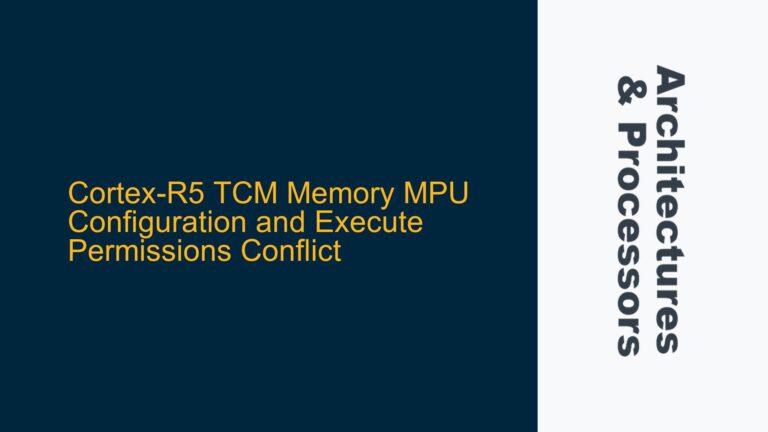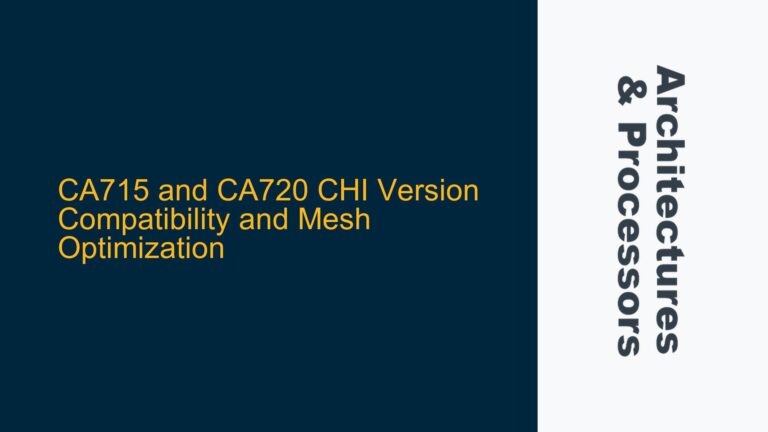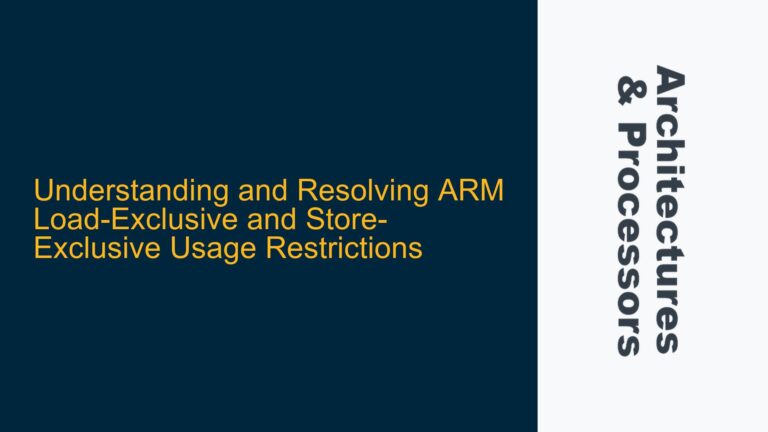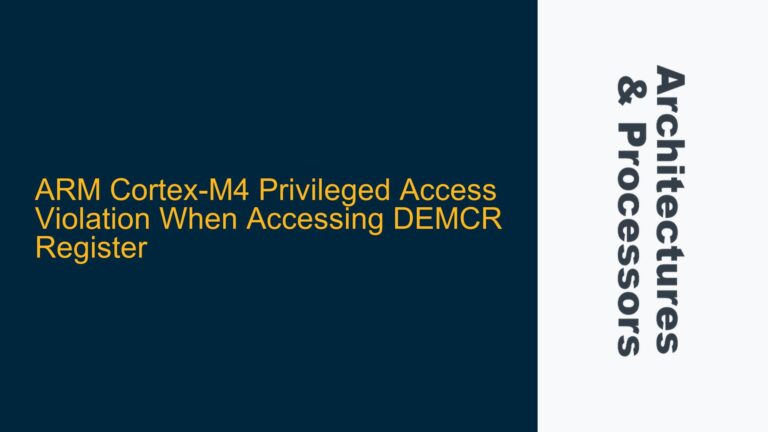ARMv7-M Speculative Data Fetching Mechanism and Behavior
Speculative data fetching is a critical performance optimization technique employed in ARMv7-M architectures, particularly in implementations like the Cortex-M7. This mechanism allows the processor to preemptively fetch data from memory before it is explicitly required by the executing instructions. The goal is to reduce memory access latency, which is a common bottleneck in embedded systems. However, understanding how speculative fetching operates, including its decision-making process and the conditions under which it is triggered, is essential for optimizing system performance and avoiding unintended side effects.
The ARMv7-M architecture reference manual provides a high-level overview of speculative data fetching, but the Cortex-M7 Technical Reference Manual (TRM) offers more detailed insights, particularly in Chapter 5.2. Speculative fetching is closely tied to the processor’s branch prediction and cache management subsystems. When the processor encounters a load instruction or a branch instruction, it may initiate speculative data fetches based on predicted execution paths. This prediction is influenced by factors such as recent branch history, cache line utilization, and memory access patterns.
The speculative fetch mechanism operates by monitoring the instruction pipeline and identifying potential future memory accesses. For example, if a loop is executing, the processor may speculate that the next iteration will access the same memory locations and prefetch the corresponding data into the cache. Similarly, if a branch instruction is predicted to be taken, the processor may prefetch data from the target address. However, if the speculation is incorrect, the prefetched data is discarded, and the correct data is fetched, which can introduce a performance penalty.
Factors Influencing Speculative Fetch Decisions and Prefetch Patterns
Several factors influence the speculative fetch mechanism in ARMv7-M architectures. These include the processor’s branch prediction accuracy, cache configuration, memory access patterns, and the specific implementation of the speculative fetch logic. Understanding these factors is crucial for diagnosing performance issues and optimizing system behavior.
Branch prediction plays a significant role in speculative fetching. The Cortex-M7 employs a dynamic branch predictor that uses a Branch Target Buffer (BTB) to store information about recently executed branches. When a branch instruction is encountered, the predictor uses this information to guess whether the branch will be taken and the target address. If the prediction is accurate, the speculative fetch mechanism can prefetch data from the predicted target address, reducing latency. However, if the prediction is incorrect, the prefetched data is discarded, and the processor must fetch the correct data, which can result in a performance penalty.
Cache configuration also affects speculative fetching. The Cortex-M7 features separate instruction and data caches, and the speculative fetch mechanism interacts with both. The size, associativity, and replacement policy of the caches influence how effectively speculative fetches can be utilized. For example, a larger cache can store more prefetched data, reducing the likelihood of cache misses. However, if the cache is too large, the overhead of managing the cache may outweigh the benefits of speculative fetching.
Memory access patterns are another critical factor. Sequential memory accesses, such as those occurring in array processing or linear data structures, are more predictable and thus more amenable to speculative fetching. In contrast, random or irregular memory accesses, such as those occurring in linked lists or hash tables, are less predictable and may not benefit as much from speculative fetching. Additionally, the memory subsystem’s latency and bandwidth characteristics can impact the effectiveness of speculative fetching. For example, if memory latency is high, speculative fetching can significantly reduce access times, but if memory bandwidth is limited, speculative fetching may exacerbate contention and degrade performance.
The specific implementation of the speculative fetch logic in the Cortex-M7 also plays a role. The processor’s prefetch unit monitors the instruction pipeline and identifies potential future memory accesses based on the current execution context. This unit uses heuristics to determine when to initiate speculative fetches and which data to prefetch. These heuristics are designed to balance the benefits of speculative fetching against the potential costs of incorrect predictions and cache pollution.
Diagnosing and Optimizing Speculative Fetch Behavior in ARMv7-M Systems
Diagnosing and optimizing speculative fetch behavior in ARMv7-M systems requires a combination of analytical techniques, profiling tools, and empirical testing. The goal is to identify performance bottlenecks, understand the underlying causes, and implement targeted optimizations to improve system performance.
Profiling tools are essential for diagnosing speculative fetch behavior. Tools such as ARM’s DS-5 Development Studio or third-party profilers can provide detailed insights into cache utilization, branch prediction accuracy, and memory access patterns. These tools can help identify hotspots in the code where speculative fetching is either particularly effective or ineffective. For example, if a specific loop is experiencing high cache miss rates, it may indicate that the speculative fetch mechanism is not effectively prefetching the required data. Conversely, if a branch-heavy section of code is experiencing frequent mispredictions, it may indicate that the branch predictor is struggling with the code’s control flow.
Once performance bottlenecks have been identified, the next step is to understand the underlying causes. This involves analyzing the code’s memory access patterns, control flow, and interaction with the cache and memory subsystem. For example, if a loop is experiencing high cache miss rates, it may be due to irregular memory access patterns that are difficult for the speculative fetch mechanism to predict. In this case, restructuring the code to improve memory locality or using explicit prefetch instructions may help. Similarly, if a branch-heavy section of code is experiencing frequent mispredictions, it may be due to complex control flow that is difficult for the branch predictor to handle. In this case, simplifying the control flow or using profile-guided optimization may help.
Empirical testing is also crucial for optimizing speculative fetch behavior. This involves making targeted changes to the code or system configuration and measuring the impact on performance. For example, adjusting the cache configuration, such as increasing the cache size or changing the replacement policy, may improve speculative fetch effectiveness. Similarly, using explicit prefetch instructions or compiler directives to guide the speculative fetch mechanism may improve performance. However, it is important to carefully evaluate the impact of these changes, as they can have unintended side effects, such as increased cache pollution or contention.
In some cases, it may be necessary to disable speculative fetching entirely for specific sections of code. This can be done using memory barriers or cache control instructions to ensure that the processor does not prefetch data that is not needed. While this approach can reduce performance in some cases, it may be necessary to ensure correct behavior in time-critical or safety-critical systems.
In conclusion, speculative data fetching is a powerful optimization technique in ARMv7-M architectures, but it requires careful understanding and management to achieve optimal performance. By diagnosing performance bottlenecks, understanding the underlying causes, and implementing targeted optimizations, developers can effectively leverage speculative fetching to improve system performance and reliability.

